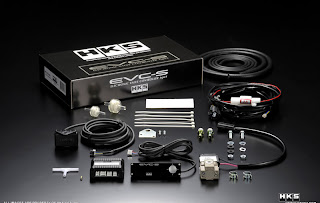Boost!!!! Only available on turbocharged engine. If you have that kind of engine, people will ask how high your engine boost. 1 bar? or more? At here autosaloon blog will like to share about boost controller.
A boost controller is a device to control the boost level produced in the intake manifold of a turbo or supercharged engine by affecting the air pressure delivered to the pneumatic and mechanical wastegate. A boost controller can be a simple manual control which can be easily fabricated, or it may be included as part of the engine management computer in a factory turbocharged car, or an aftermarket electronic boost controller such as those made by HKS, APEXi, or GREDDY.


Since less positive pressure can be present at the wastegate actuator as desired boost is approached the wastegate remains closer to a completely closed state. This keeps exhaust gas routed through the turbine and increases energy transferred to the wheels of the turbocharger. Once desired boost is reached, closed loop based systems react by allowing more air pressure to reach the wastegate actuator to stop the further increase in air pressure so desired boost levels are maintained. This reduces turbocharger lag and lowers boost threshold. Boost pressure builds faster when the throttle is depressed quickly and allows boost pressure to build at lower engine RPM than without such a system.
This also allows the use of a much softer spring in the actuator. For instance, a 7 psi (0.48 bar) spring together with a boost controller may still be able to achieve a maximum boost level of well over 15 psi (1.0 bar). The electronic control unit can be programmed to control 7 psi (0.48 bar) psi at half throttle, 12 psi (0.83 bar) at 3/4 throttle, and 15 psi (1.0 bar) at full throttle, or whatever levels the programmer or designer of the control unit intends. This partial throttle control greatly increases driver control over the engine and vehicle.









